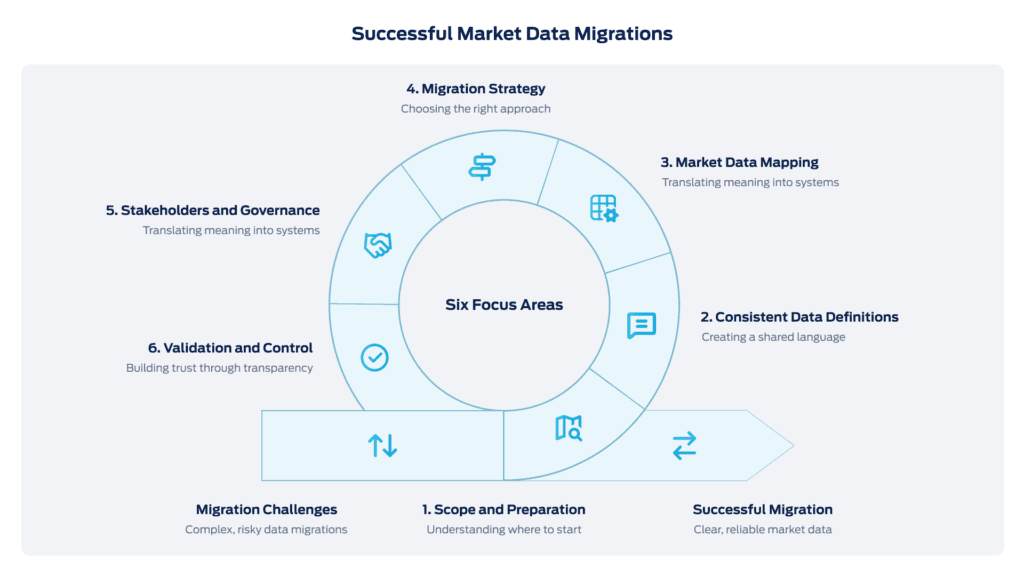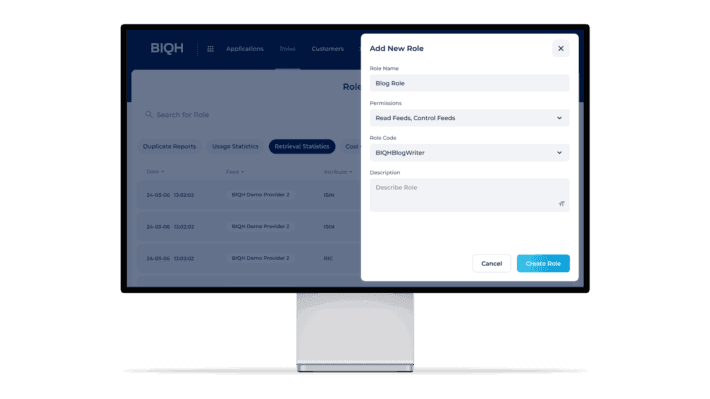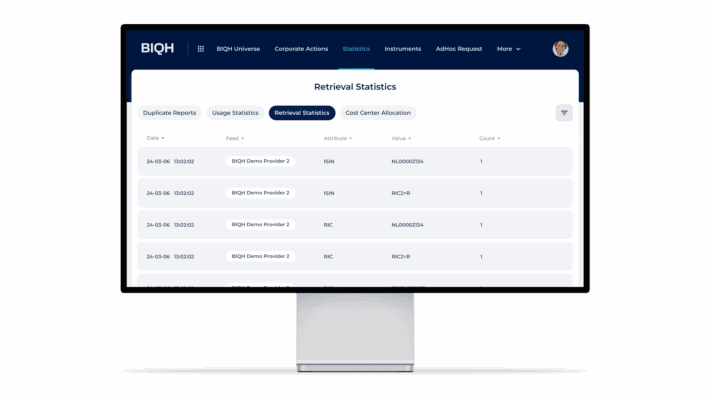Making market data migrations work: 6 focus areas that make the difference


BIQH and Viewwave share their combined experience in managing complex market data migrations, from defining scope and governance to validation and control.
Market data migrations may seem at first like a purely technical exercise: moving data from one system to another. In reality, they are far more complex. They affect processes, definitions, governance, and the way teams collaborate. Because so many stakeholders, dependencies, and data vendors are involved, many migrations take longer than expected or fail to deliver their intended outcomes.
In this blog, written in collaboration between BIQH and Viewwave, we share six focus areas that determine whether a market data migration succeeds not only from a technical perspective but also organisationally. These are not theoretical success factors, but practical guidelines designed to help organisations ask the right questions before the first dataset is moved.
Table of Contents

1. Scope and preparation – understanding where to start
A successful market data migration starts with clarity. Over time, many organisations have developed fragmented market data landscapes, with multiple teams managing their own data feeds from different data vendors. This makes it difficult to know what should be migrated, what should stay, and where the main dependencies lie.
Defining scope means more than listing systems or datasets. It requires mapping all market data flows, identifying overlaps, and uncovering outdated or duplicate connections. A Market Data Platform can support this, for example through our three-step approach, while a consultant can help guide the organisation through the process. Only when the current landscape is fully understood can realistic priorities and timelines be set for migration.
Key questions to consider:
- Which systems, market data sources, and teams are involved in this migration?
- Are there hidden data feeds or local vendor connections that are still in use?
- How will the migration affect current market data processes and users?
- What defines a clear and manageable scope for this project?
2. Consistent data definitions – creating a shared language
Technology alone cannot guarantee success. The real risk lies in misinterpretation: different departments often use the same market data terms but mean something entirely different. Without clear and consistent definitions, market data quickly loses its meaning when it is transferred between systems or used by different teams.
A business glossary provides that shared understanding. It defines key market data terms, their purpose, and ownership, ensuring everyone speaks the same language regardless of which market data vendor or application the information originates from. Some Market Data Platforms, such as BIQH’s, can incorporate a client’s own field names in their data mapping, which helps make the migration process smoother and more consistent. A well-maintained glossary becomes the foundation for accurate mapping, reliable validation, and sustainable governance.
Key questions to consider:
- Have the main market data terms been defined and agreed across all departments?
- Is there a central glossary that is actively maintained and accessible?
- Who owns and updates the definitions?
- Are these definitions applied consistently across market data projects and daily operations?
3. Market data mapping – translating meaning into systems
Once definitions are aligned, they must be translated into the technical structure of the target systems. Market data mapping connects meaning to structure and ensures that the information being transferred reflects the same business reality once implemented. The BIQH Market Data Platform can mimic existing interfaces, which allows new configurations to be implemented without additional IT change capacity. With the right mapping and the expertise of a consultant, the migration can proceed smoothly without placing extra demands on internal IT teams.
This stage benefits from a combination of business understanding and technical precision. Business experts bring context and purpose, while technology teams ensure those meanings are represented correctly in system configuration, validation rules, and integration logic. The right collaboration ensures that market data remains both accurate and meaningful throughout the migration.
Key questions to consider:
- How is market data from each source currently structured and used?
- Which agreed definitions and standards guide the mapping process?
- Who reviews and approves the mapping outcomes?
- How is market data quality monitored during and after migration?
4. Migration strategy – choosing the right approach
The market data migration strategy determines how controlled and reliable the transition will be. Many organisations choose a phased approach, such as a parallel run or shadow setup, where old and new systems operate simultaneously. This allows market data to be tested, validated, and compared before the final switch.
A one-time market data migration may suit smaller or well-contained scopes, but carries higher risk. The right strategy depends on both organisational readiness and the technical flexibility of the market data environment. When planning and implementation are aligned, migrations can be executed with confidence and minimal disruption to ongoing operations.
Key questions to consider:
- Which migration strategy best fits our market data landscape?
- How will we test and validate market data before going live?
- Is there a rollback or fallback plan if issues arise?
- How will we ensure stability during each migration phase?
5. Stakeholders and governance – aligning business and technology
A market data migration touches every part of the organisation. Business, IT, risk, compliance, and operations all rely on accurate and timely market data. Without clear governance, decisions can be delayed or made in isolation, leading to inefficiency and unnecessary rework.
Effective governance brings coordination and control. It involves engaging the right stakeholders early, defining responsibilities, and setting clear rules for decision-making. Well-facilitated communication keeps priorities aligned, while a reliable market data platform ensures that all market data feeds are processed consistently and accurately throughout the migration. When governance and technology work hand in hand, the process becomes far more predictable and resilient.
Key questions to consider:
- Are all relevant stakeholders involved from the beginning?
- Who owns decisions related to market data definitions, mapping, and validation?
- How are decisions documented and communicated across teams?
- Is there a consistent governance process to manage risks and changes?
6. Validation and control – building trust through transparency
Validation is where preparation turns into proof. It confirms that the migrated market data is complete, consistent, and ready for business use. A market data migration only succeeds when users can trust the data from day one.
Validation should not be treated as a final milestone but as an ongoing discipline. Clear ownership, structured review, and defined acceptance criteria are essential to maintain confidence. Automated validation within the Market Data Platform ensures that all feeds are processed and compared accurately, while good governance keeps results interpreted, acted upon, and communicated across the organisation. When process and technology reinforce each other, quality becomes sustainable.
Key questions to consider:
- Are validation rules directly linked to business definitions of market data?
- Who reviews and approves validation results?
- How are deviations or exceptions handled?
- What process ensures continuous improvement after go-live?
Conclusion
A market data migration is never just about moving data from one system to another. It requires clear governance, disciplined execution, and technology that can manage the complexity of working with multiple data vendors. The organisations that succeed are those that combine structured preparation with reliable market data processing.
Asking the right questions for each of the six focus areas from the start can help to remove potential problems before they even arise.
At BIQH and Viewwave, we help firms bring these elements together.
Viewwave leverages over ten years of implementation and market data experience to address challenges in data management, data quality, and governance. The team supports the organisational side of migrations, ensuring alignment, ownership, and structure throughout the process.
BIQH believes in a fair and transparent marketplace for the market data industry. We deliver market data management as a solution and as a service. The BIQH Market Data Platform consolidates, validates, and distributes complex market data, enabling firms to operate with confidence and make informed decisions based on reliable information.


